Over and over, the FAA has stressed that safety is the top priority when it comes to allowing and integrating drones into the airspace. However, initiatives like the UAS IPP and now BEYOND highlight that the FAA isn’t passively exploring what this safe integration should look like. Instead, the FAA is actively working with leading organizations across the country to test and evaluate the integration of civil and public drone operations into the national airspace system.
The Choctaw Nation is one of the organizations that has been involved with both of these programs, although they’ve done so on a much deeper level than most. They worked with the FAA to determine how drones can best transport cargo at lower altitudes but were also the only lead participant to work with the Volpe Center on testing acoustics for UAS. The Choctaw Nation is working to collect data to develop performance-based standards, some of which will take place at a one-of-a kind testing facility that will be located deep in the heart of the Choctaw Nation.
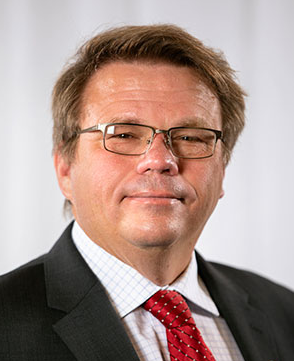 James Grimsley is the Executive Director of Advanced Technology Initiatives for the Choctaw Nation of Oklahoma, and he recently detailed why Oklahoma may be the next proving grounds for drones with the creation of this facility. He talked through many other developments related to the present and future of the technology though, so we caught up with him to further detail what he wants people to know about this new facility that will be in the heart of Choctaw Nation and much more.
James Grimsley is the Executive Director of Advanced Technology Initiatives for the Choctaw Nation of Oklahoma, and he recently detailed why Oklahoma may be the next proving grounds for drones with the creation of this facility. He talked through many other developments related to the present and future of the technology though, so we caught up with him to further detail what he wants people to know about this new facility that will be in the heart of Choctaw Nation and much more.
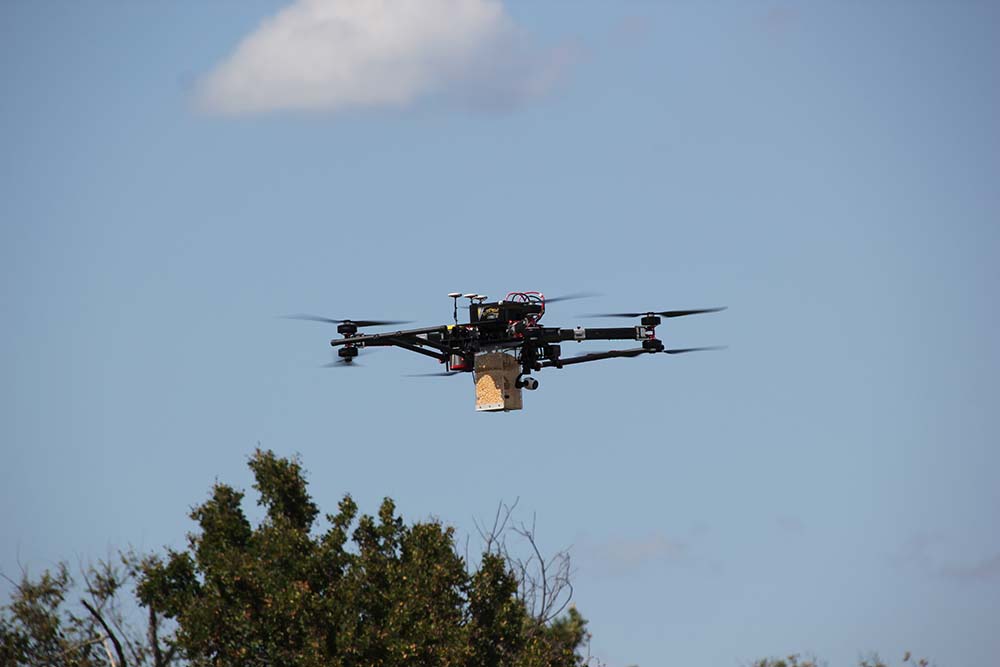
From 2018 with OSU
Jeremiah Karpowicz: Having been active in the development of technology policy at all levels of government (federal, state, local and tribal) as it relates to the aviation and autonomous systems industries, what can you say about the opportunities and challenges associated with these different levels of government?
James Grimsley: One of the things that was designed into our system of constitutional government was federalism, so we've always had a tension between these levels. That was consciously designed because these conflicts were how they envisioned power would be balanced to establish and maintain a secure system.
New technologies and innovations have impacted what these conflicts look like though. They’ve compelled questions around whether we want something centralized at the federal level or if it’s better as something that individual states should define. Those questions compel conversations, but the opportunities and challenges that come out of them are all related to finding the right balance between these different levels.
In aviation specifically, it was decided to leave the safety aspect of these new technologies and innovations to the federal government, but elements of aviation not specific to safety are not defined in that same way. For example, exactly where an airport can be placed is not something the federal government decides. That’s up to individual states. Exactly where an aircraft can take off and land falls under the authority of state, local, and tribal governments, so there always has been and continues to be a balance of responsibility amongst these levels.
And drone technology represents a new technology that has changed the considerations around this balance, haven’t they?
I mentioned what this looked like in aviation, but what I’m really talking about in that context is legacy aviation, where any and all aircraft are piloted by humans with people on board at very high altitudes. And drones have absolutely triggered a renewed look at the roles and responsibilities in the airspace.
That’s what we did first with the IPP and now with BEYOND, because we needed to redefine this balance, but it’s done so much more. We had positive reactions from the public and from our stakeholders because there’s so much anticipation about what we’re going to be able to do with this technology. Seven or eight years ago we had a lot of negative hysteria and hype, but that’s given way to very rational and reasonable discussions about expectations and what people want to see. It’s been very encouraging.
You mentioned your work with the IPP and now BEYOND, so what can you tell us about your efforts to identify and grow economic opportunities for your region as part of these programs?
We focused on applications that are very needed. When we started with the IPP, we decided we were going to focus on real problems because we didn’t want to come up with a solution looking for a problem. We did that with our agricultural missions and public safety tests, and we were able to see positive applications that are being further defined in the BEYOND program.
The opportunities are the result of solving these specific problems but also helping people realize that drones aren’t just flying over the backyard or taking over the skies. That’s fueling an optimism with the general public to show them we can use the technology to open up opportunities but also prevent the bad stuff.
As part of that, hdid you have any “ah-ha” moments when exploring how this technology can create real value for users?
We did, and it was almost always the simple things.
A lot of the people that are involved in these programs, myself included, are technologists, so we tend to focus on and dream about really exotic things that we're going to do with the technology. So we overlook things that can be mundane but can be very important.
One example of that was counting cattle. It's kind of a hassle and not always easy for agricultural producers to count herd animals because it takes a long time and you can easily mess up the count. That inventory has to be taken constantly though, and it’s a very simple task to fly over the herd using image recognition and AI to capture that count. Ultimately, that’s a very simple application, but it turned out to be the number one request that came in from our agricultural research partner.
Another example was in specialty crops, and in this part of the country, we were specifically looking at pecans. Pecan groves can make a lot of money if they're healthy, but there’s a major challenge when it comes to estimating yield. Growers often have trouble understanding the health of the crop because they can have all sorts of diseases that they can’t see in order to apply pesticides or fungicides.
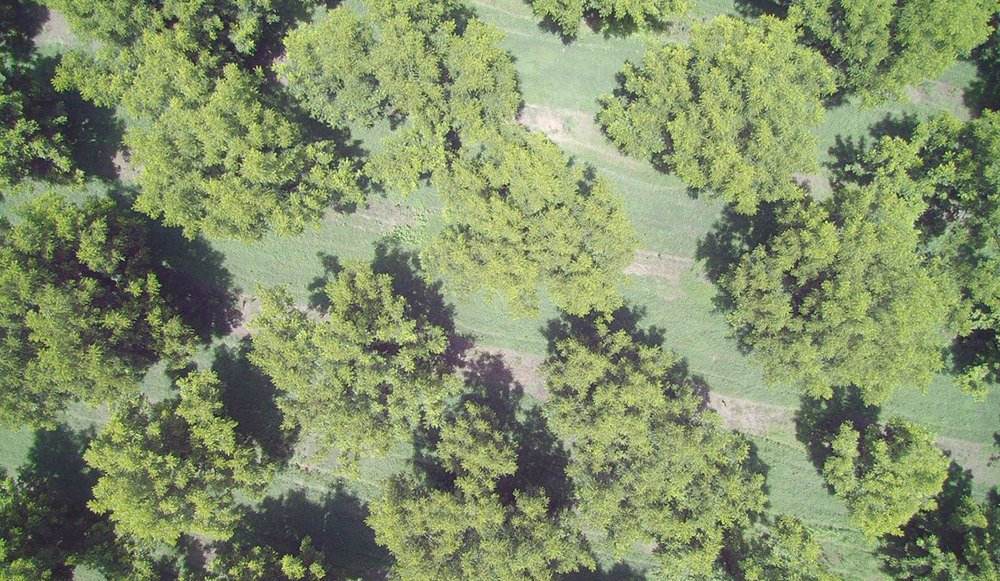
Overhead view of a pecan grove
With the aerial views we can provide via drones we can give these growers certainty that they don’t currently have. With this imagery they’re able to make decisions related to pesticides or fungicides quickly. It gave them a lot more certainty in terms of their overall yields. And so that was another very simple application.
Drones that support agricultural missions and support public safety operations will be deployed in very different urban and rural environments, so what can you tell us about how both will fit into the bigger Advanced Air Mobility (AAM) ecosystems that will eventually see all these aircraft operate safely?
Both will be using airspace that is underutilized right now.
The lower altitudes of our airspace isn’t densely populated and that’s really driven certain applications of the technology. From the surface all the way up to 3,000 feet can be used in a much more effective way. We can use these lower altitudes to relieve traffic congestion but if we're going to see ubiquitous drone delivery and certain public safety drone applications, they're going to have to share some of the airspace at these lower altitudes.
That’s part of the reason we’re focused on improving safety for any AAM operations. We want to see that increase across a wide range of aircraft, which includes small drones and eventually urban air taxis, but also sees that increase in safety for into the national airspace, but also increasing the safety for all general aviation aircraft.
That bigger look at the airspace is connected to a shift in terminology from “UAM” to “AAM”, and it sounds like the AAM term is one that you believe will be much more relevant for the future of the sky. Can you explain why that is the case?
I always thought it was a misnomer to call it “Urban Air Mobility” because while these vehicles could eliminate urban congestion, there are just as many necessary applications for it in rural areas.
I see that in a very real way because I serve as a state Transportation Commissioner which gives me oversight for Oklahoma's highways, bridges and roads. The strain on these pieces of infrastructure in urban environments is very real, but rural areas have just as many challenges related to age or setup. What we have in both urban and rural areas is a looming transportation crisis. One is driven by urban congestion, but the other is just as real because the roadways are not as safe as we want and need them to be. Getting anything off the ground to reduce the strain on our ground infrastructure system improves overall safety and we can’t just be focused on making that happen in urban environments.
In fact, if you think about emergency management applications, your zip code can be a death sentence in the United States. If you're in an urban area, you're typically within four to seven minutes of an ambulance if you call 9-1-1. In a rural area, that's not the case. It could be 45 minutes or longer, depending on where you're at.

Thermal cameras equipped on drones can powerfully support search and rescue missions at night
Rural areas have just as much to gain with this technology to the point that it could be an equalizer. This technology really has the potential to equalize the quality of life for people in both urban and rural areas. So that's why I applauded the move away from UAM to AAM.
As long as we’re talking about major developments for the industry, you detailed why Oklahoma might be the next proving grounds for drones, much of which relates to the creation of a one-of-a kind-facility that will enable testing of all types for drones. How important is it that the vision for this facility isn’t about what will be created in the short term, but what’s going to be enabled in the coming decades?
It goes back to how tribes operate.
Tribes have a much longer planning horizon than any form of government. I've worked with government bodies on all different levels but I’ve never worked with any that have a long term vision like tribal governments. The Choctaw Nation alone has a 100-year sustainability plan. They're literally thinking 100 years out. That’s why they can be so patient, because they think generationally. How are things going to improve for the next generation and beyond? Those are the questions they’re asking and are working through. That kind of thinking makes a big difference.
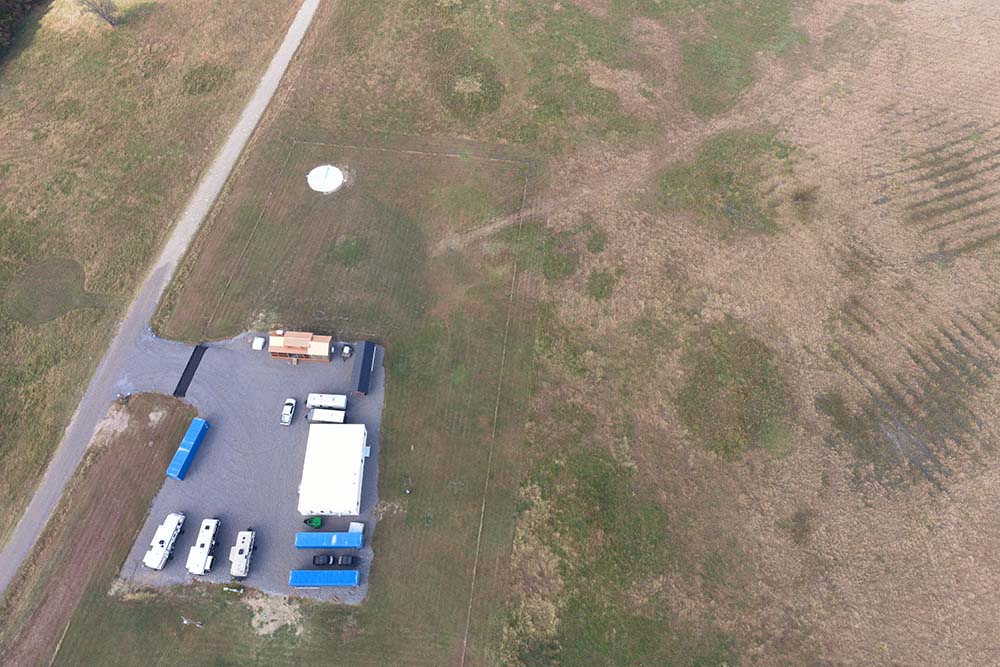
A closer look at the future home of the advanced aviation testing center being constructed by the Choctaw Nation of Oklahoma.
You talked about the data you’ll get from tests performed at this facility as defining the “art of the possible,” so what has you excited about what these possibilities will mean for the future of the technology?
A lot of time we make assumptions. We can’t always get our blinders off.
Big cities like New York and London were very horse-centric in the late 19th century and the streets were a mess because of it. City leaders and urban planners wanted to discover a solution to the point that an international urban planning conference was scheduled in the late 1890s to figure this out. It was a 10-day conference to come up with solutions that would solve this horse problem, but they canceled it after three days because their conclusion was there was nothing they could do. The world depended on horses, so the mess they created was just something everyone had to deal with.
The irony is that at this time automobiles were already being developed and popping up on these very streets. By 1913, there’s a photo that shows the entire street is filled with automobiles, when only 13 years earlier that very street was filled with horses. The whole world had been transformed to unintentionally solve this unsolvable problem.
That new technology solved a major problem, but it also displaced the existing infrastructure and markets. However, it then created an industry so much bigger than any of the ones that were displaced. Any losses of jobs in the horse industry were more than compensated for by the automotive industry. I think the same thing is happening in aviation because we’re creating whole new opportunities that did not previously exist. Imagine being able to quickly and cheaply deliver 1,000 pounds, which is what we’re talking about with the delivery of generators for certain emergency satiation. That's a big deal and could change a whole lot of how we operate.
It’s not just about packages and pizzas, is it?
It’s not, but I think there's a place for that. There's always a place for human convenience that could then positively define how cities function. They could change expectations related to how we can operate in urban and rural environments. Just like the automobile, drones are going to change the approach to what feels like impossible problems.
If there’s one thing you want the industry to know about the tests you are and will be performing in Oklahoma and how that work will impact the future of the technology and market, what would it be?
We want to work with as many people as we can because we want this industry to grow beyond anyone's expectations. Our practical approach to those efforts coupled with our long term vision has allowed us to balance realism with optimism. The Choctaw Nation believes that the future of this technology is very bright in terms of impact on transportation and quality of life and health, all of which has been further defined by events of the past year.
When the pandemic started in 2020, there was a lot of talk about whether or not this industry was even going to survive. There had always been a lot of hype, so would this end up proving there was nothing to it after all? Quite the opposite has happened because I’ve never seen so much activity. The tremendous enthusiasm about the technology is more than I could have predicted. I’ve been involved in aviation for over 30 years and this is the most exciting time of my career.
Drones are solving these impossible problems and changing things for the better. We want to work with anyone who is willing to further enable these developments for their organization or industry.
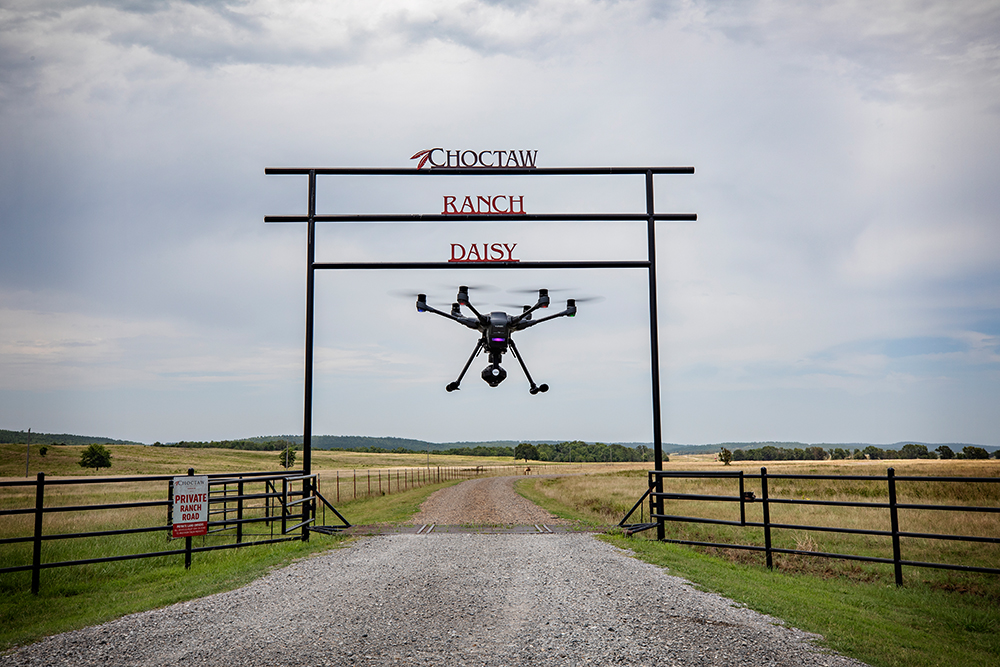


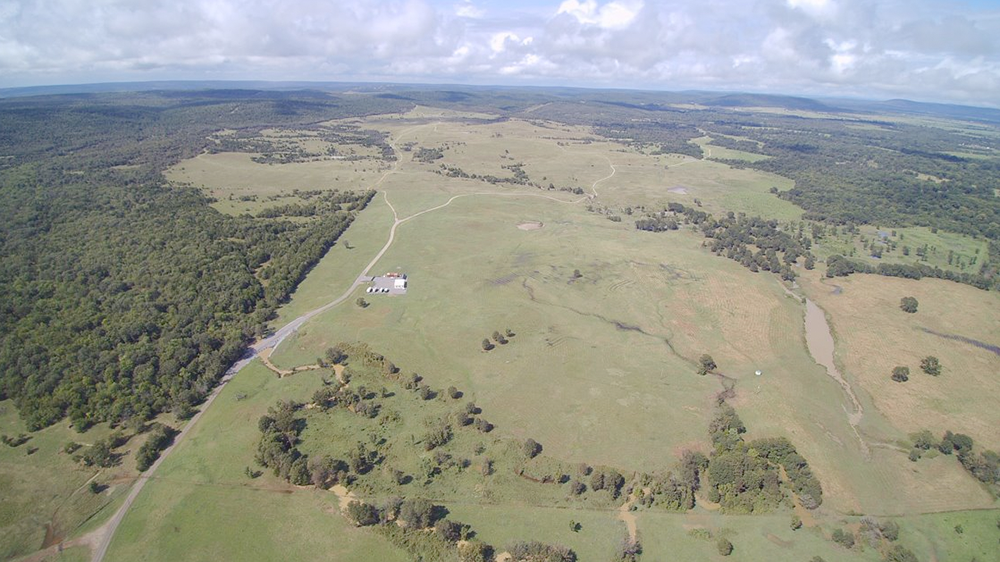

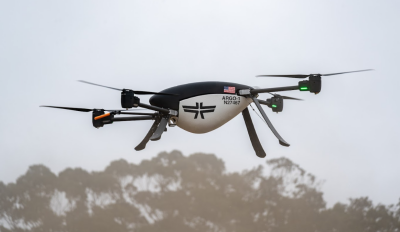
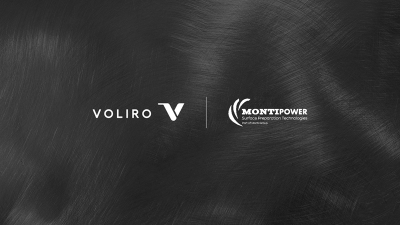










Comments